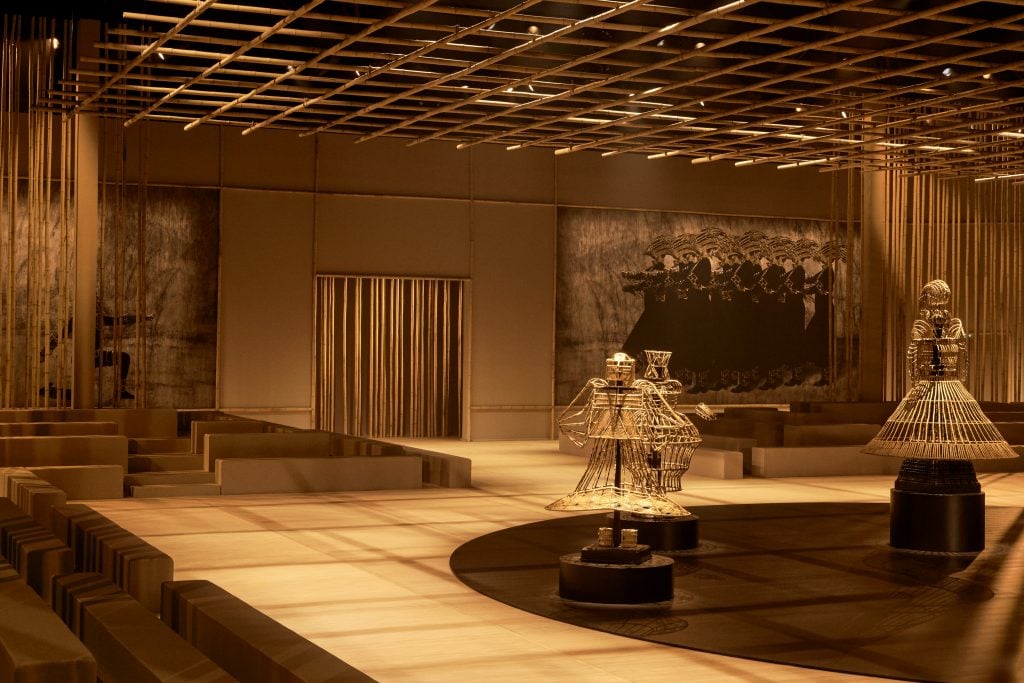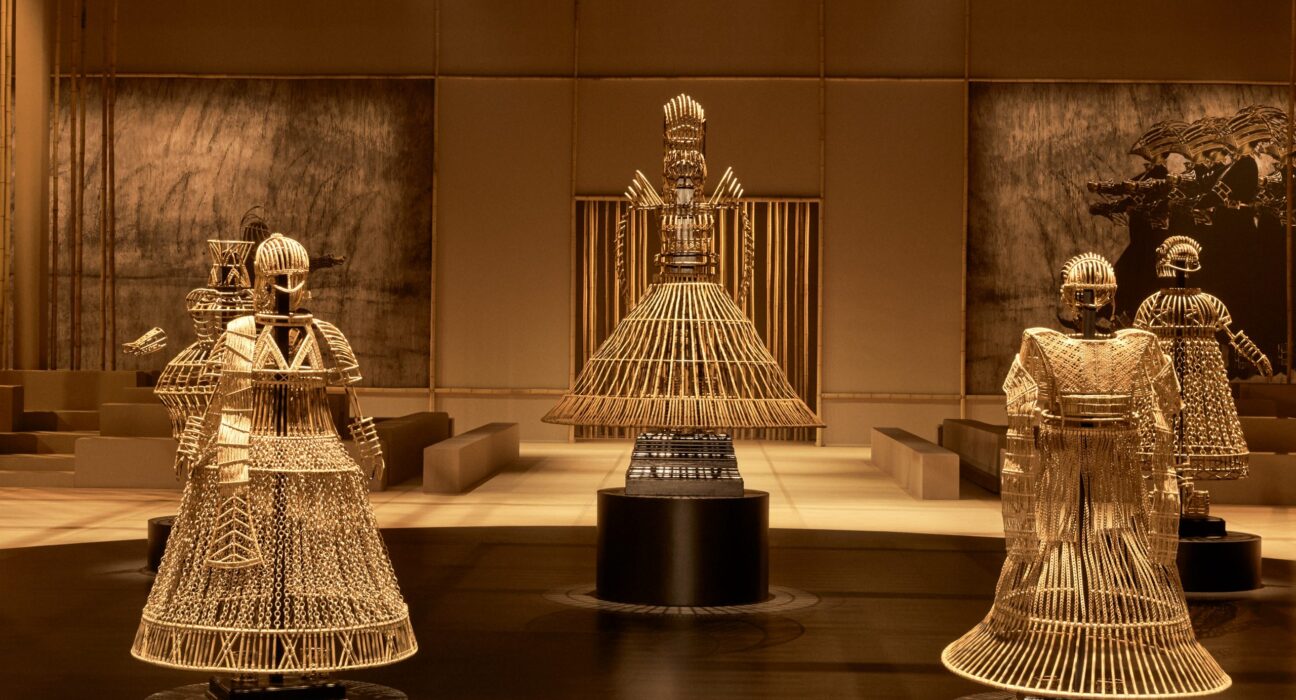Fashion can be a battlefield. Since her appointment as Dior Creative Director eight years ago, Maria Grazia Chiuri has made each runway presentation just as much about clarion feminist messaging as it is about fashion. For Tuesday’s Fall 2024 show, the catwalk was punctuated with Mumbai-based multimedia artist Shakuntala Kulkarni’s wearable sculptures of mighty warrior women. Models navigated around the nine austere and foreboding exoskeleton sentries built from cane.

Shakuntala Kulkami’s scenography pre-show. Photo: Adrien Dirand. Courtesy of Dior.
“My main concern for the last couple of years have been body politics,” said Kulkarni before the show. “How do you look at the female body?” The sculptures seen on the Dior runway originated as part of a 2012 series called “Of Bodies, Armour and Cages.” Like fashion, armor serves to protect as well as restrict, Kulkarni explained. “I did it as a metaphor,” she said. “It’s protecting the body, but at the same time trapping the body.”
An installation view of one of Shakuntala Kulkami’s backdrop murals. Photo: Adrien Dirand. Courtesy of Dior.
Kulkarni further fleshed out the event space with dramatic murals on canvas. In an artist’s statement, she explained: “My work has been an enquiry into the lives of urban women and their spaces, like the home, work, cultural and social spaces within society, which is essentially patriarchal.”
Marching in step with these feminist artworks, Chiurri sent out her own fierce foot soldiers to a syncopated drumbeat. “Miss Dior” was printed on some of the garments, in the style of the fat marker graffiti scrawl often seen on protest signs, but it was a double-sided reference.
Three looks from Fall 2024. Courtesy of Dior.
Miss Dior refers to Catherine Dior, the sister of the fashion house’s founder Christian Dior, and a French resistance fighter during World War II. After the war, she became a flower grower in Provence, and her brother is believed to have named the brand’s famous perfume after her.
The archival hand-drawn script on this season’s line also references Dior’s short-lived 1967 ready-to-wear boutique from the Marc Bohan-era, an ahead-of-its-time moment of off-the-rack liberation in the age of couture. Chiuri channeled this sense of upheaval and passion with wearable but regal neutral tones, punctuated by pops of ferocious leopard-patterned outerwear and glittering evening dresses. A demand for reform never looked so good.
Follow Artnet News on Facebook:
Want to stay ahead of the art world? Subscribe to our newsletter to get the breaking news, eye-opening interviews, and incisive critical takes that drive the conversation forward.

